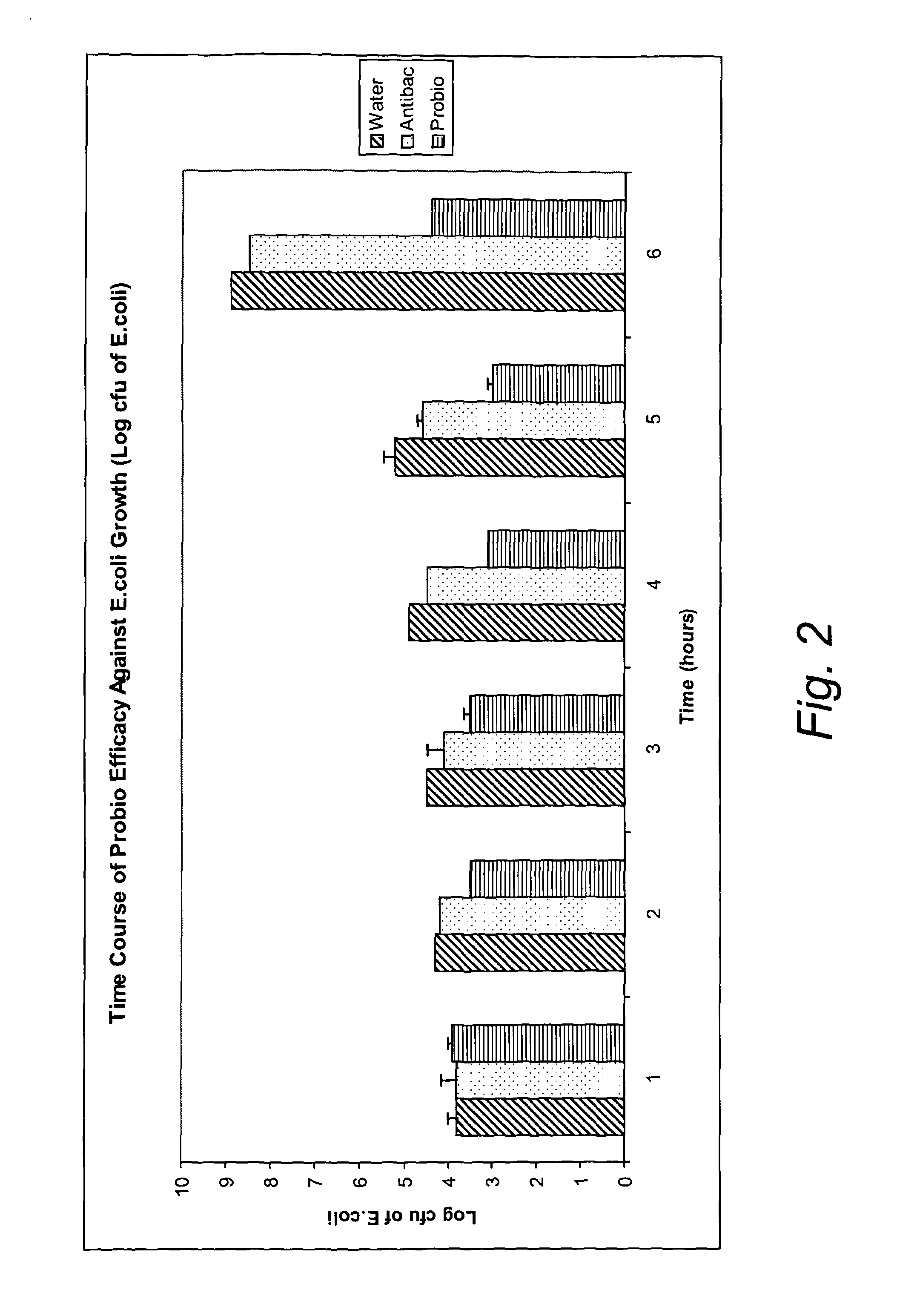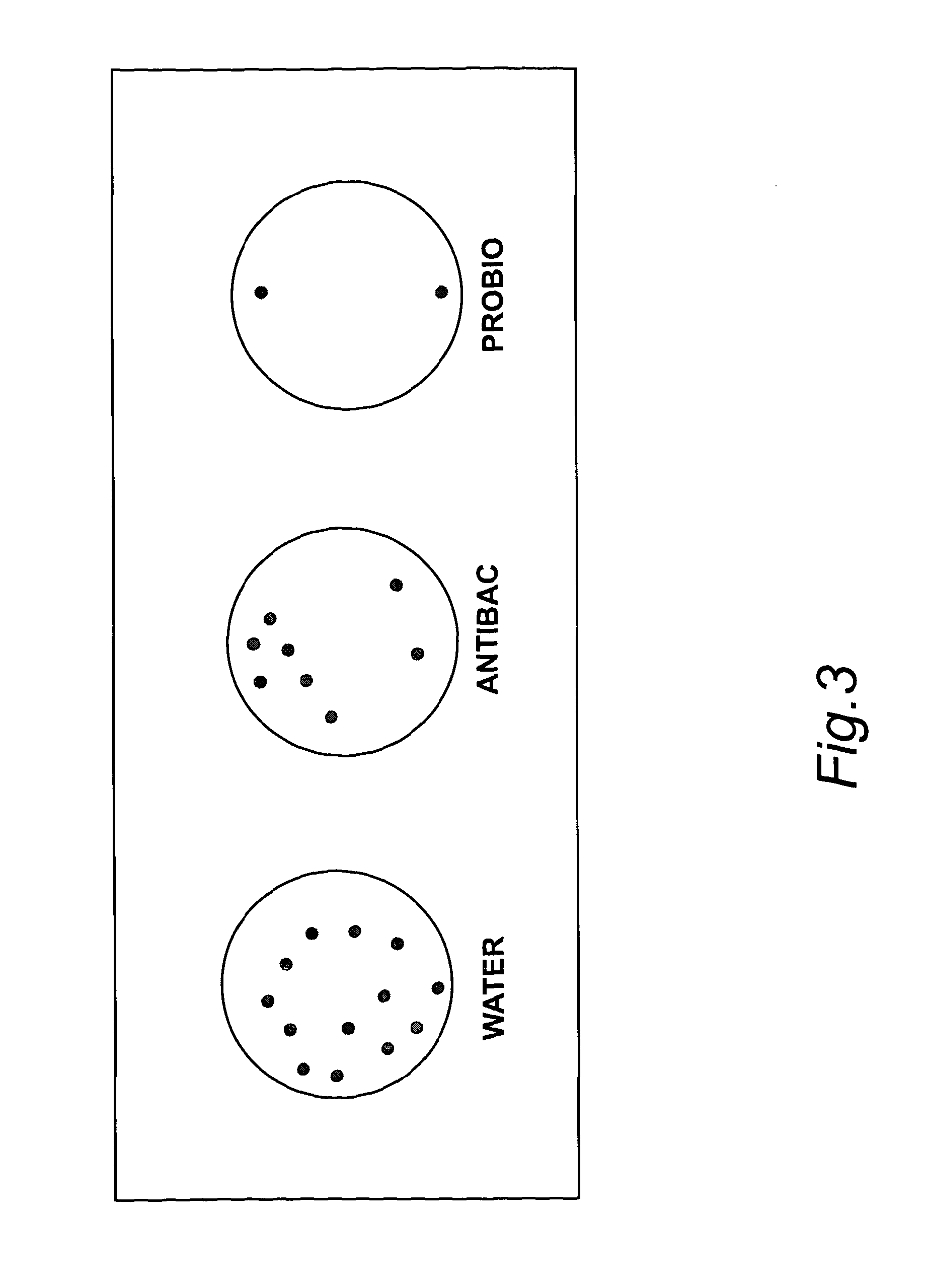Cleaning Compositions
- Summary
- Abstract
- Description
- Claims
- Application Information
AI Technical Summary
Benefits of technology
Problems solved by technology
Method used
Image
Examples
example 1
[0058]A culture of Bacillus bacteria is grown overnight in 10 millilitres (ml) of a complex nutrient rich media like LB (lysogeny broth) at 35° C. with shaking at 250 revolutions per minute (rpm). Any culture that does not reach a minimal OD600 of 1.0 (OD=optical density) is re-inoculated at a later date and not used.
example 2
[0059]The cleaning composition according to the present invention is prepared as a concentrate by adding to water, the cleaning compound, one or more surfactants, and the culture of Bacillus Circulans, Bacillus Megaterium and Bacillus Sphaericus. Where required, citric acid is also added. The composition is stirred thoroughly.
example 3
[0060]The Bacillus bacterial strain-containing aqueous cleaning composition was tested by comparison studies with an antimicrobial agent and water. The effect on the reduction of E. coli bacteria after a specified length of time was examined.
[0061]The strain used is from a commercial bacterial culture collection and is fully traceable. The strain used is Escherichia coli (E. coli): ATCC 25922. E. coli was cultured for 18 hours in tryptone soya broth (TSB) at 44° C. prior to use in the experiments.
[0062]The present cleaning composition was diluted 1:5 in sterile water. 10 ml was filtered through a cellulose nitrate membrane allowing concentration of the bacterial spores present in the product on the surface of the membrane.
[0063]Filtration was repeated on separate membranes with 10 ml of sterile water (control 1) and antibacterial agent diluted 1:5 in sterile water (control 2).
[0064]The membranes were then placed on the surface of tryptone soya agar (TSA), a standard nutrient rich ba...
PUM
 Login to View More
Login to View More Abstract
Description
Claims
Application Information
 Login to View More
Login to View More - R&D
- Intellectual Property
- Life Sciences
- Materials
- Tech Scout
- Unparalleled Data Quality
- Higher Quality Content
- 60% Fewer Hallucinations
Browse by: Latest US Patents, China's latest patents, Technical Efficacy Thesaurus, Application Domain, Technology Topic, Popular Technical Reports.
© 2025 PatSnap. All rights reserved.Legal|Privacy policy|Modern Slavery Act Transparency Statement|Sitemap|About US| Contact US: help@patsnap.com



